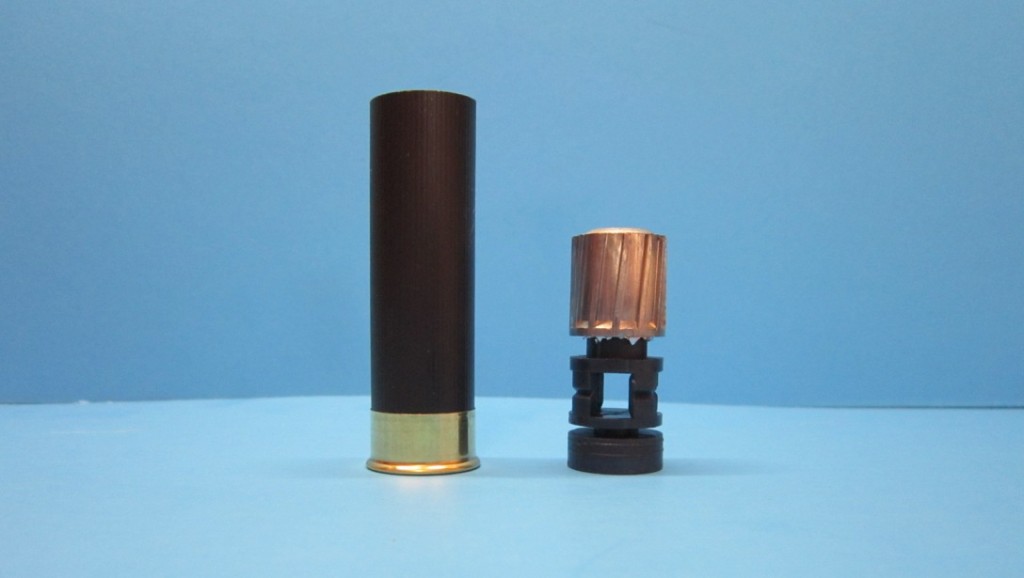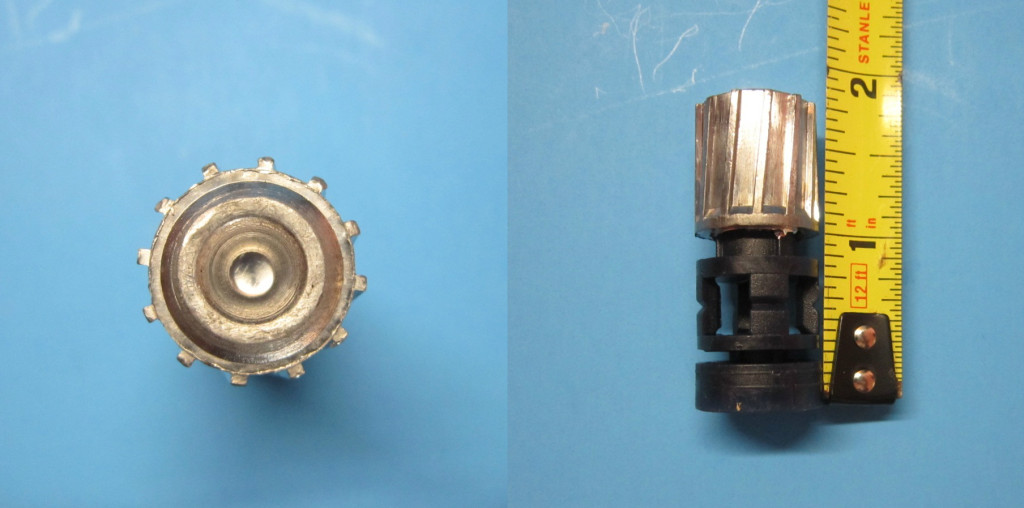Being an avid handloader of shotgun slugs, I was naturally intrigued when I learned earlier this year that Ballistics Products Inc. of Hamel, MN had added a new slug to its lineup of components for handloaders. As soon as I was able, I ordered a box of their new Thug Slugs and began the process of giving the product a preliminary range test.
Thug Slug overview
The Thug Slug is the most recent addition to BPI’s line of slug components for handloading. It consists of a cylindrical, hollow-based, hollowpoint, lead projectile and an affixed plastic gas seal section. The Thug slug is offered in .410 (1/4-oz.), 20 gauge (7/8-oz.), and 12 gauge (1-oz. and 1-1/8-oz.). My range trial was with the 12 gauge 1-1/8-oz. version. According to the company’s website, the slug is fit for use in both smooth and rifled bores.
It is worth noting that while the overall mass of the slug and gas seal is 1-1/8-oz., the slug itself is 437.3 grains, which is approximately one ounce.
Loading
Loading the slug was as quick and easy as any handloading project gets, especially since I was working with factory new, pre-primed Rio 2-3/4” hulls. After adding an appropriate charge of Alliant Green Dot to the primed hull (load data is available for a variety of hulls, primers and powders) I simply inserted the slug, compressed the payload slightly with my loading press, and then applied the crimp. The data from which I was working, which is available from BPI for a few dollars, called for the hulls to be closed with a standard fold crimp. I was curious to see if substituting crimp type would affect accuracy, so I closed about half of my handloads by applying a roll crimp.
According to my data sheet, the slugs would leave the muzzle at a velocity of just under 1300 f/s* and would produce chamber pressures of less than 10,000 PSI. I expected that this would make for a light recoiling and pleasant shooting round.
*Actual velocity was likely lower than the listed figure due to my gun’s short, 18.5-inch, barrel.
At the range with the 1-1/8-oz. Thug Slug
With the slug loads crimped, boxed, and labeled appropriately, I took to the range on a bitter, breezy January day when temperatures were in the low teens.
Test limitations
It is likely that the wind wreaked a little havoc with accuracy. Unfortunately, when you live on the coast of Maine, wind is pretty much inevitable during most times of the year. If you wait for the perfect shooting day, you’ll probably never go.
Also, a more thorough and somewhat scientific test of the slug would have involved shooting a greater number of groups and testing a greater number of load combinations. My budget, which is a shade greater than $0, did not allow this. I would be eager to hear the experiences of others who have given Thug Slugs a try and would welcome the chance to expand my “data” for the projectile.
Procedure
All shots were taken from a bench rest at targets 50 yards distant using a 12-gauge Benelli Nova Tactical topped with a BSA 2.5x scope. Shots were fired through both the Nova’s factory smooth bore, 18.5-inch barrel with a fixed improved cylinder choke, and through a Carlson’s aftermarket 18.5-inch barrel with a rifled choke tube installed.
Group 1: 1-1/8-ounce Thug Slug, fold crimp, through the Improved Cylinder barrel
The first group I fired was a bit of a disappointment. The slugs strung diagonally into an almost oval pattern that was a foot long from end to end. This was not a promising start to the range session. That said, recoil was mild as I had expected.
Group 2: 1-1/8-ounce Thug Slug, roll crimp, through the Improved Cylinder barrel
The roll crimped load fared better through the smooth bore. At least four slugs printed into a group that fit inside a 6.5” circle. I’m not sure if the fifth shot missed the paper completely, or if two slugs went through the same hole (the one underlined in the above photo). I have no way of knowing for sure.
Group 3: 1-1/8-ounce Thug Slug, fold crimp, through the rifled choke tube
The rifled choke tube yielded noticeably better accuracy with the fold crimped loads. Most of the slugs (once again, I’m not sure if it’s 3 or 4) clustered into an approximately three-inch group while another slug impacted a few inches higher. The group fit comfortably inside a 6.5-inch circle.
Group 4: 1-1/8-ounce Thug Slug, roll crimp, through the rifled choke tube
I didn’t quite have enough fold crimped loads left to fire a five-shot group, so I went ahead and ended the day with a four shot group. The combination of the fold crimped loads and the rifled tube yielded the best results of the trip. Three of the slugs cut a ragged hole and the fourth impacted about two inches high and to the left. The entire group fit inside a 4-inch circle.
Projectile integrity
Having only a few slugs left after the above accuracy trials, I decided to conduct an informal projectile integrity test on the Thug Slug by firing one into a block of ballistic wax from a distance of 50 yards. The wax is not intended to simulate animal tissue in any way and cannot really be compared to calibrated gelatin blocks. According to the manufacturer, when the material is at its optimal temperature of 72-degrees Fahrenheit, one inch of penetration in the wax is about equal to 1.34-inches of calibrated 10-percent gelatin. Given that the air temperature on the day of my tests was 15 degrees rather than 72, it’s likely that the medium was a more efficient bullet stopper than usual. I wasn’t looking for scientific results, but rather a rough idea of what would happen to the slug when it impacted a relatively soft medium.
After impacting the block, the slug penetrated to a depth of 4-inches. There was no noticeable expansion of the slug’s frontal section, but the hollow base pinched closed. I’m not sure if these results translate in a meaningful way to potential on-game performance, but it seems apparent that the slug was not packing a tremendous amount of energy upon impact.
Conclusions
Preliminary testing seems to indicate the following:
- Roll crimped loads yielded better accuracy than fold crimped loads
- The rifled choke tube noticeably improved accuracy over the Improved Cylinder barrel
- While the load was fun and pleasant to shoot, it remains to be seen if the terminal performance of such a light and slow moving slug is adequate for big game.
(2934)










